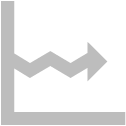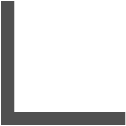A trend in water quality data indicates that measured values have been overall rising or falling over a time period. LAWA displays trends for the last 5, 10 and 15 years for the river and lake water quality data. A trend may be classified as indeterminate if there is insufficient evidence to determine if the values are changing in either direction. Sites that are 'not assessed' may be monitored, but the data do not meet eligibility criteria for trend analysis.
What do water quality trends show us?
LAWA calculates trends to show how the quality of water in rivers and lakes has changed at each site over time. Changes in water quality often take years to be seen, and it may be decades for any restoration actions to show effect in water quality trend results.
Trends calculated over different periods tell us different information. Natural systems are variable, and trends can be influenced by climate and weather patterns, as well as being affected by land use and land management changes at sites (e.g. changes in point-source discharges such as sewage treatment plant upgrades). Longer-term trends may be more reliable, and less sensitive to short-term influences of seasonal and climatic weather patterns.
What water quality indicators does LAWA show trends for?
LAWA shows 5, 10 and 15-year trends for ten river water quality indicators: E. coli, clarity (black disc), turbidity, total nitrogen (TN), total oxidised nitrogen (TON), dissolved inorganic nitrogen (DIN), ammoniacal nitrogen, nitrate nitrogen, dissolved reactive phosphorus (DRP) and total phosphorus (TP). LAWA also shows 10 and 15-year trends for the Macroinvertebrate Community Index (MCI), Quantitative Macroinvertebrate Community Index (QMCI), and Macroinvertebrate Average Score Per Metric (ASPM) which are indicators of the ecological health of a river.
LAWA shows trends for seven lake water quality indicators: total phosphorus (TP), total nitrogen (TN), ammoniacal nitrogen, chlorophyll a, cyanobacteria, clarity (Secchi disc) and E. coli.
LAWA trend categories for rivers and lakes
LAWA categorises trends into five classes. These are: very likely degrading, likely degrading, indeterminate, likely improving, and very likely improving. These likelihood definitions simplify the framework laid out by the Intergovernmental Panel on Climate Change (IPCC), (Stocker et al., 2013).
Note that the trend confidence categories do not reflect the rate of change, this is how quickly values might be rising or falling, only how confident we can be that the values are changing. The actual changes might be very small, even for sites with high confidence that they're changing in a certain direction.
Improving Trends
|
Very likely improving trend |
Likely improving trend |
The improving trend symbols are used for sites that show an improving trend in water quality and are either classified as 'very likely improving' or 'likely improving'. An improvement is a decrease in most water quality indicators, such as phosphorus and nitrogen concentrations. However, for visual clarity indicators (black disc and Secchi disc depth) and the Macroinvertebrate Community Index (MCI), an improvement is an increase in value.
When the trend evaluation method reports confidence in an improving trend of between 90 and 100%, we assign a 'very likely improving' category. When the reported confidence is between 67 and 90% we assign a 'likely improving' category. The lower likelihood reflects that while there is an indication of an improving trend, these is less statistical support for it.
Indeterminate Trend
|
Indeterminate trend |
When the trend evaluation method reports confidence in either trend below 67%, we assign an 'indeterminate' trend category. This classification is given to sites where there is insufficient evidence to confidently determine if water quality is showing an improving or degrading trend. An indeterminate trend means that the data do not show an upward or downward trend direction with sufficient statistical likelihood.
Degrading Trends
|
Very likely degrading trend |
Likely degrading trend |
The degrading trend symbols are used for sites that show a degrading trend in water quality and are either classified as 'very likely degrading' or 'likely degrading'.
A degrading trend is an increase in most water quality indicators, such as phosphorus and nitrogen concentrations. However, for visual clarity indicators (black disc and Secchi disc depth) and the Macroinvertebrate Community Index (MCI), a degradation is a decrease in value.
When the trend evaluation method reports confidence in a degrading trend of between 90 and 100%, we assign a 'very likely degrading' trend. When the method reports confidence between 67 and 90% we assign a 'likely degrading' trend. The lower likelihood reflects the fact that while these is an indication of a degrading trend, there is less statistical support for it.
Trend Not Assessed
|
Not Assessed |
Sites are not assessed for trends when they do not meet the criteria to be included in the trend analysis (e.g. there were not enough data/samples over the period, not enough variability in the data to assess a trend, too many below detection-limit samples in the data, or long runs of the same value).
How do we calculate water quality trends?
Data requirements
Trends are calculated for the last 5 (July 2018 - June 2023), 10 (July 2013 - June 2023) and 15 (July 2008 - June 2023) hydrological years. Data are evaluated to determine whether water quality is showing improving, degrading, or indeterminate trends.
The data used to calculate water quality trends for rivers and lakes is collected monthly or quarterly. Macroinvertebrate data are generally collected annually, but sometimes twice per year. Generally, the more data points we have available for a site, the more statistical power we have for detecting a trend.
LAWA calculates the trends for river and lake sites after removing data of a lessor quality based on Quality LAWA calculates the state of water quality for each site after removing data of a lesser quality based on Quality Code (QC) information provided by councils. This removes data that may have been compromised or undergone significant modification and therefore may not be representative of the intended measurement. All measurements with a NEMS QC 100 (missing data) and 400 (measured value may have been compromised and/or undergone significant modification) are removed from the dataset before calculation of state. This also includes internal QC 400 child codes (e.g. 403, 404, 450) and 'poor quality' codes from council's internal QC code schemas (e.g. for Auckland: 41, 61, 100, 42 and 151). This is part of an ongoing data improvement process that councils are actively working on to implement.
LAWA calculates and displays 10- and 15-year trends for river and lake water quality sites using monthly data preferably, and quarterly data if trends cannot be calculated with monthly data (e.g. too many months are missing). LAWA calculates and displays 5-year trends using monthly data only, it does not use quarterly data for 5-year trends.
River and lake water quality datasets are evaluated for a trend if they meet either of two sets of sample abundance criteria. They require:
- samples for 90% of the number of months in the period, and 90% of the years sampled, OR
- 90% of the quarters sampled and 90% of the years sampled.
If the monthly abundance criteria were met, the trend is deemed to be more reliable than if only the quarterly abundance criteria were met. Five-year trends are only evaluated if a dataset meets the monthly-abundance criteria. Sets of quarterly sampled data will only ever meet the quarterly-abundance criteria.
For 5-year river and lake trends, water quality sites were excluded from the analysis if they have less than 90% of the monthly data expected (fewer than 54 samples).
For 10- and 15-year trends, macroinvertebrate indicators are excluded from analysis if a site has less than 80% of the data expected, or if there are data from fewer than eight years (or thirteen) out of the last ten (or fifteen) years. LAWA does not calculate five-year trends for macroinvertebrates.
The trend methodology
To determine whether water quality at a river or lake site is showing improving, degrading or indeterminate trends, LAWA follows the methodology of McBride (2019), as implemented in R functions (R Core Team) provided by LandWaterPeople (v2102; last updated in November 2021). LAWA uses the trend analysis methods provided by LandWaterPeople (Snelder and Fraser (2019)), which assume that data will always show an increase or decrease over time. The LWP trend evaluation method reports the percentage confidence that the analysed data set features a decreasing trend. If the trend must be either decreasing or increasing, the percentage confidence of an increasing trend is simply one hundred minus the confidence of a decreasing trend. Further details can be found in guidance for the approach to calculating water quality trends (Larned et al, 2021).
Trends are calculated on data for one site/measurement combination at a time.
The data for each combination are tested for seasonal effects, and then analysed with either a seasonal or non-seasonal version of the non-parametric Mann-Kendall Slope Test. This test evaluates all pairwise combinations of the data, evaluating whether the later observation is higher or lower than the earlier observation, for each pair. The magnitude of the difference has no importance, only the sign. The seasonal version of this test compares the water quality data of each season separately (January with Januaries, February with Februaries, etc) which means any changes present are not hidden by seasonal patterns.
Censored values (data that are less than or greater than laboratory detection limits) are substituted in the trend analysis, by very low or very high values. However, if too many of the data are censored below the detection limit of the laboratory method, the trend evaluation would become unreliable, and we opt not to calculate it. We choose not to calculate trends where there are fewer than five total and three unique, non-censored observations. Sites which do not meet these requirements for trend analysis are reported as 'not assessed'. This label is also used when sites do not have enough measurements available, such as only six years of measurements available for ten-year trends.
Some investigators recommend data be flow adjusted before trend analysis to remove any variation in water quality measurements caused by variation in stream flow. However, many councils do not measure river flow at all of their water quality sampling sites, so data used for trend analysis on LAWA are not flow-adjusted.
Where do I find more information?
Gadd, J., Snelder, T., Fraser, C. & Whitehead A. 2020. Urban river and stream water quality state and trends 2008-2017. Prepared for the Ministry for the Environment. NIWA Client Report 2018328AK
LandWaterPeople (LWP). https://landwaterpeople.co.nz/
Larned et al. 2021. Guidance for the analysis of temporal trends in environmental data. Prepared for Horizons Regional Council and MBIE Envirolink. 99 pp.
McBride G.B. 2019. Has water quality improved or been maintained? A quantitative assessment procedure. Journal of Environmental Quality 48:412-420.
Snelder T & Fraser C. 2018. Aggregating trend data for environmental reporting. LWP Client Report 2018-01.
Snelder T & Fraser C. 2019. "The LWP-Trends Library: v2101 April 2021", LWP Ltd Report, p35.
Stocker T, Qin D & Plattner G (Editors). 2014. Climate Change 2013: The physical science basis: working group | Contribution to the Fifth Assessment Report of the Intergovernmental Panel on Climate Change. Cambridge University Press.






